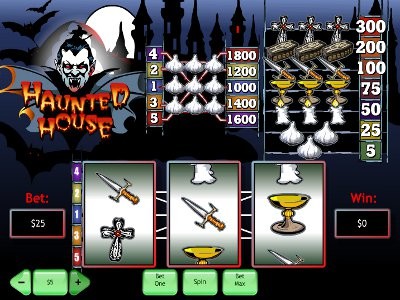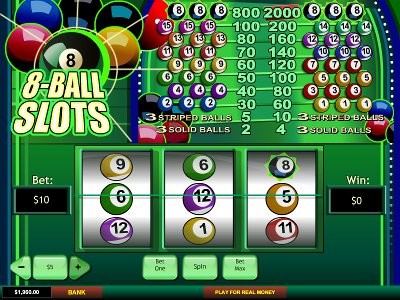Understanding probability bias in games
To improve game design, actively analyze probability biases that influence player decisions and experiences. Recognizing patterns will empower developers to create more engaging and balanced gameplay. Start by scrutinizing loot drop rates, random item generation, or decision-making scenarios where players encounter uncertain outcomes. Adjust these elements based on player feedback to enhance fairness and excitement.
Gather data on player interactions to identify any skewed probabilities. Tracking how often players receive certain items or rewards can expose unintended biases. Implement analytics tools to gain insights into player behavior and preferences. Use this data to make informed adjustments that align with expectations, fostering a more enjoyable environment.
Consider A/B testing different probability scenarios. For instance, vary loot distribution across different groups of players to see how changes impact engagement and satisfaction. This hands-on approach allows for real-time feedback and necessary tweaks, helping to create a balanced gaming experience that retains player interest.
As you refine game mechanics, always prioritize transparency. Players appreciate clarity regarding how probabilities influence their experiences. Providing clear explanations of game mechanics fosters trust and enhances overall satisfaction. Direct communication with your audience regarding changes creates a community that values their input, leading to improved gameplay and loyalty.
Identifying Common Probability Biases in Popular Games
Recognize patterns in loot boxes where players often perceive a higher chance of rare items than statistically available. Games with attractive visuals and sounds can amplify this bias, leading players to think they are closer to winning. Tracking your results over time can help clarify the true probabilities.
Examine progression systems that lure players into believing they have a fair shot at rewards. In games like mobile RPGs, the percentage shown for loot drops may misrepresent the actual odds when influenced by player expectations and behavior. Conducting an analysis of drop rates across multiple sessions yields more accurate assessments.
Analyze reinforcement schedules in games. Titles that use random rewards can create an illusion of greater chances. For instance, consistent small rewards can keep players engaged, while rare, larger rewards can lead to disproportionate excitement. Observe your engagement levels in relation to frequency and magnitude to identify these biases.
Investigate how player psychology influences probabilities. In gambling-based games, near misses can trigger players to overestimate their effectiveness. Highlight common scenarios where players feel ‘close to winning’ and track how this affects behavior patterns.
| Game Type | Probability Bias | Impact on Players |
|---|---|---|
| Loot Boxes | Overestimation of Rare Item Drop Rates | Increased Spending |
| Mobile RPGs | Misrepresentation of Reward Percentages | Frustration and Engagement |
| Gambling Games | Near-Miss Effect | Perceived Skill Improvement |
Apply these observations when approaching various game mechanics. It's beneficial to keep a journal noting your experiences with rewards and drop rates to develop a clearer view of probability biases at play. This awareness can enhance decision-making and enjoyment in gaming experiences.
Analyzing Player Perceptions of Odds and Outcomes
Players often equate perceived odds with actual probabilities, making it imperative for game designers to provide clear and transparent information about mechanics. To enhance player understanding, showcase statistical data directly tied to game outcomes. For instance, displaying the odds of winning prominently in settings like loot boxes can adjust perceptions positively.
Implementing feedback mechanisms can help align player expectations with reality. After significant events, such as wins or losses, present players with a summary of odds they faced. This builds awareness and encourages informed decision-making in future gameplay.
Utilize behavioral data to identify trends in player perceptions. Analyzing how players react to specific odds can reveal misconceptions. In response, consider integrating tutorials or informative prompts that clarify how odds function within the game. This proactive approach reduces confusion and enhances engagement.
Conduct surveys or focus groups to gather insights on players’ beliefs regarding odds. Use this feedback to refine game mechanics and communication strategies. Adjusting based on player input fosters a more immersive experience and strengthens trust within the gaming community.
Finally, consider gamifying the learning process around odds. Incorporate mini-games or challenges that educate players on probability and outcomes in an entertaining manner. This not only informs but also engages players, making them more invested in the game.
Understanding the Impact of Randomness on Game Balance
Integrate randomness strategically to enhance player engagement. Random elements can create excitement and unpredictability, yet they must be balanced with fairness. Introduce mechanics like weighted probabilities for rewards to ensure that players have a fair chance of success while still experiencing variability.
Analyze player feedback and statistical data to fine-tune randomness. Gathering data on how often players encounter specific outcomes can guide adjustments. For example, if certain rare events occur too frequently, consider modifying their probability to maintain a sense of achievement without diminishing excitement.
Implement systems that mitigate frustration due to randomness. For instance, a “mercy” mechanic can reward players after repeated failures, helping to maintain interest and motivation. Additionally, ensure that players understand the odds and event mechanics. Transparency regarding probabilities fosters trust and appreciation for game design.
Focus on the pacing of random events. Spacing out high-impact surprises can keep players engaged without overwhelming them. Craft a rhythm where slight unpredictability leads to meaningful moments without detracting from overall balance.
Test randomness thoroughly during development stages. Conduct A/B testing to observe player behavior across different scenarios. This direct feedback loop will help to refine mechanics, ensuring that randomness enhances the gaming experience rather than detracts from it.
Emphasize player agency within random systems. Allow players to make choices that can influence outcomes, such as skill-based mini-games or strategy elements that can mitigate the effects of chance. This approach limits frustration and encourages players to engage further with the game.
Incorporate randomness in a way that aligns with your game’s theme and mechanics. If your game centers on strategy, consider randomness that complements decision-making without overshadowing it. For more casual games, playful randomness can enhance enjoyment without disrupting game flow.
Developing Strategies to Mitigate Probability Bias
Utilize transparent algorithms in game design to inform players of the mechanics behind probability outcomes. Clearly define the odds that govern gameplay elements, such as loot drops or win ratios. Providing this data fosters trust and reduces misconceptions about randomness.
Incorporate player feedback mechanisms within your game. Allow players to share their experiences regarding perceived biases. Analyzing this feedback helps identify patterns, enabling developers to adjust probabilities or clarify mechanics to align better with player expectations.
Implement a balanced reward system that considers player engagement and skill level. Instead of relying solely on random chance, design mechanics that reward consistent play or strategic choices, thereby minimizing reliance on luck and enhancing overall satisfaction.
Conduct thorough testing with a diverse group of players across various skill levels. Observing interactions offers insights into how different demographics perceive probability. Continuous testing and adjustment ensure that biases are minimized and the game remains fair and enjoyable for all players.
Leverage data analytics to monitor player behavior and outcome distributions. Regularly analyzing this data allows developers to identify unexpected biases or patterns that may emerge over time. Addressing these insights promptly maintains a balanced gaming environment.
Educate players about probability concepts and how they apply in-game scenarios. Developing tutorials or in-game guides that explain mechanics can demystify randomness, leading to a more informed player base and reducing feelings of frustration due to perceived unfairness.
Case Studies: Successful Games and Their Probability Mechanics
Analyze the mechanics of "Candy Crush Saga." Players encounter various candy combinations that trigger bonuses. The chance of obtaining a special candy relies on algorithms adjusting probabilities based on user performance. Matching consecutive candies increases the likelihood of generating special combinations, keeping engagement high.
"Fortnite" represents another successful case. The loot system features probabilistic mechanics with different rarity levels for weapons and items. Players experience excitement with each box or drop, as the randomness generates suspense. Balancing probabilities ensures that newcomers still find quality gear while veterans have nuanced strategies.
Consider "Genshin Impact," where character gacha pulls employ a probability system that enhances player retention. Each pull provides a guaranteed higher chance of receiving rare characters after multiple unsuccessful attempts, incentivizing further investment. This mechanic cultivates a sense of achievement while managing expectations.
In "Overwatch," the loot box system exemplifies effective probability mechanics. Players earn boxes through gameplay, but the chance of specific skins remains low. This drives the player’s yearning for exclusive items, promoting continuous play. Transparent odds maintain trust and prevent feelings of frustration through randomness.
Investigate "The Binding of Isaac," where each run alters the probability of item drops based on player performance and decisions made during gameplay. The integration of randomness enhances replay value, ensuring each session feels unique and engaging while still allowing players to strategize based on potential outcomes.
These examples reveal how carefully designed probability mechanics contribute to player satisfaction, enhance engagement, and promote longevity in games. Balancing randomness and reward systems remains key to successful game development.
Tools for Testing and Evaluating Probability Bias in Games
Utilize statistical analysis software like R or Python with libraries such as NumPy and Pandas to collect and analyze game data effectively. These tools allow you to run simulations and apply various statistical tests, helping to identify patterns and biases in probability distributions.
Implement tools like Unity Analytics or GameAnalytics to track player interactions and outcomes. These platforms provide valuable metrics, enabling you to assess how often certain events occur versus expected probabilities, revealing any discrepancies that could indicate bias.
Consider using A/B testing frameworks. This gives the ability to compare different game mechanics or probability settings by analyzing player performance under varied conditions. Services like Google Optimize simplify this process through user-friendly interfaces.
For a more in-depth approach, employ dedicated probability testing tools such as Pivotal Tracker or Probabilistic Programming frameworks like PyMC3. These tools facilitate building models that predict outcomes under different scenarios, helping to ensure fairness in game mechanics.
Leverage player feedback mechanisms through surveys or in-game reporting to gather qualitative data on perceived fairness. This insight can complement quantitative findings, providing a fuller picture of user experience regarding probability mechanics.
Lastly, community-driven resources such as GitHub repositories and forums can offer scripts and methodologies shared by fellow developers. Engaging with this community allows for the exchange of best practices and tools tailored for bias evaluation.





































































